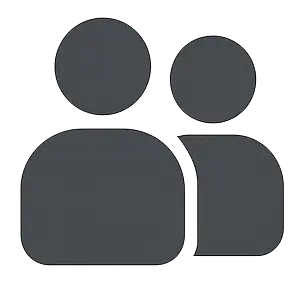Lion of the North fans rejoice! The battles of Breitenfeld and Lützen are back (with company!), this time as part of Ben Hull's award-winning Musket & Pike Battles series. The fourth and newest installment in this popular series is Gustav Adolf the Great: With God and Victorious Arms, a tactical battle game featuring FIVE battles from the career of one of the Great Captains of History, King Gustav II Adolf the Great of Sweden. In his brief career, he catapulted Sweden to the forefront of European power politics. This volume sets its focus on the rise and climax of Gustav Adolf's military system.
The series began with the English Civil War in This Accursed Civil War, then covered the Swedish army after Gustav Adolf in Sweden Fights On, then looked at the rise of the French in the Thirty Years War in Under the Lily Banners. In this volume the Swedish face the tough Polish cavalry, lance equipped winged Husars and Cossacks. The Swedish-style brigades also take on the unbeaten Tilly at the head of the allied Catholic League and Imperial armies. Finally, Wallenstein, with a resurgent Imperial army, mastered the art of drawing out the Swedes to attack on ground of his choosing.
In each battle included in Gustav Adolf the Great: With God and Victorious Arms, armies are divided into several wings. Each has a commander and an order that limits the types of actions that units of that wing may perform. Victory goes to the player who can coordinate the actions of his wings in the heat of battle. Units are infantry battalions or brigades, cavalry regiments and artillery batteries. Rules include Cavalry Charges, Cavalry Pistols for skirmishing or for close combat, and artillery grazing fire. Play is highly interactive and most battles can be played through in one sitting. The battles included in Gustav Adolf the Great: With God and Victorious Arms are:
Dirschau 1627 - Known in Poland as the Tczew. Sweden had been at war with the Polish-Lithuanian confederation under King Sigismund III since 1621, first to gain territory in Livonia and then Prussia. In the Prussian campaign that started in 1626, Gustav Adolf had finally brought the Poles to the field and defeated them in battle at Gniew, skillfully using terrain to offset the powerful Polish Hussars. The King crossed the Vistula and again faced the Polish General Koniecpolski and sought to do the same. The Poles were pushed back on the first day and when the fighting renewed on the second day, as the Swedes were about to carry the day, Gustav Adolf was shot in the chest, near his throat and nearly died. His grave injury caused the Swedes to retire ending the battle in a draw.
Breitenfeld 1631 - The most famous battle of the Thirty Years War and King Gustav Adolf's crown jewel. The Imperial and Catholic League Armies had a long string of victories under the redoubtable Tilly. The upstart Swedish King and his erstwhile Saxon allies took the field across from Tilly's veterans. The combined Swedish-Saxon army was larger than Tilly's so he was forced to deploy in one long thin line. As was his style, Tilly struck first and the Saxons collapsed much easier than anyone expected. The Imperial left charged the Swedish cavalry repeatedly, but they held firm. Once the Imperial cavaly was exhausted the Swedish horse counter-attacked and opened Tilly's left flank. Tilly's main line was already committed to an attack on the Swedish left and was unable to react to the threat. The Swedish cavalry and infantry rolled up the flank and turned the tide of the war.
Alte Veste 1632 - The late summer saw the Swedish besieged by Wallenstein at Nürnberg. Wallenstein had been recalled after Tilly was mortally wounded earlier in the year. Wallenstein was unmatched in his ability to raise troops. The Imperial Army's ranks swelled as he moved to trap the Swedes at their important stronghold of Nürnberg. Repeatedly Gustav Adolf formed for battle and challenged Wallenstein to come out of his fortified camp, but he refused. As the supply situation worsened, the impetuous King attacked the Imperial camp at the Alte Veste "Old Fortress"- a derelict castle atop a wooded hill that would then allow the Swedish guns to dominate the Imperial camp. The Imperials were prepared with trenches and an abatis that stymied the Swedish advance. When the vaunted brigades faltered, much of the cavalry was sent in dismounted. Wallenstein saw an opportunity to strike a blow and sallied his cavalry and cut down many of the exhausted troops. Only the cavalry reserve was able to avert a complete disaster. The invincible Swedes had been defeated. Gustav Adolf received reinforcements days later and Wallenstein broke camp and moved north.
Lützen 1632 - The King pursued Wallenstein into Saxony. It was growing late in the year and the armies would need to disperse and encamp for the winter. Gustav Adolf sought to catch Wallenstein's army dispersed and defeat it in detail. Southeast of Leipzig the Swedes caught up to the Imperial main body. Wallenstein's army had detached two corps and was in serious danger. He quickly summoned his other troops to join him and chose his ground. He fortified a position at Lützen. The Swedes attacked, but a dense fog hampered their progress. In the confusion and fog, King Gustav Adolf was killed. The Swedish army continued the attack, mostly unaware of the death of their King. Both armies were battered, the Swedes with the heavier losses, but they had pushed the Imperials back. Despite receiving reinforcements, Wallenstein retired and conceded the field to the Swedes. The Swedes could not press the advantage in light of the King's death.
Honigfelde / Trzciano 1629 - "I've never had a hotter bath!" exclaimed Gustav II Adolf upon his return. Very nearly captured while trying to extricate his army from a Polish and Imperial trap, this great cavalry battle showed the Poles were to be treated with respect. Rheingraf Otto Ludwig's German cavalry attacked the advancing Poles and was drawn into a pincer. Gustav Adolf rushed forward to save the impetuous Rheingraf. Koniecpolski showed his cunning. The Imperial contingent joined the fray and sent the Swedes falling back. The Imperial commander, von Arnim, would take the field with Gustav Adolf at Breitenfeld two years later.



980 full-color counters
Two full sheets (backprinted) and two half-sheet maps
Series Rulebook
Gustav Scenario/Playbook
2 Player Aid Cards
1 ten-sided die
Snyggt och genuint.. - 9/10
Det först som slog mig och min medspelare var att det tog lite längre tid än vi trodde att få koll på alla regler och försöka hålla alla dessa i minnet..
Men när detta väl var löst blev vi väldigt imponerade av detaljrikedomen och det känns verkligen att tillverkaren har ansträngt sig för att gör spelet så "verklighetstroget" som möjligt.
Olika länders kavalleri har olika beväpning till exempel. Det som gör att jag inte sätter ett betyg på 9 är som sagt dom lite komplicerade reglerna samt speltiden som är relativt lång.
Har man spelat något i Musket&Pike serien kommer detta förmodligen gå som en dans men jag kända att vissa delar var lite svåra att komma ihåg mellan spelltillfällena.
Dock vill jag starkt rekommendera detta spel till all som är intresserade av tidsperioden samt gillar verklighetstrogna slag.
Jag har själv bara hunnit spela igenom 3 av 5 slag så många timmars nöje utlovas till er som köper detta spel.
Edit 2010-04-16: Ursprungligen satte jag ett betyg på 8 men efter att ha spelat det ett flertal gånger har jag ökat upp betyget till 9. Ett av mina absoluta favoritspel.
Speltyp: Krigsspel
Tillverkare: GMT Games
Länkar: Regler, Tillverkarens hemsida, BoardGameGeek
Försälj. rank: 9109/17213